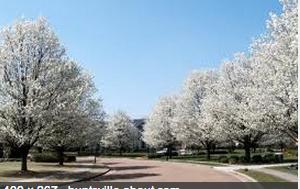Question #1: In past years I dusted the leaves of my vegetable plants with lime to discourage pests from eating my plants. Is there something else I can do? I am strictly an organic gardener and do not use any type of spray in my garden.
Answer #1: We suggest you look into protecting your plants with a floating row cover (Remay® or Agribon®). This is a lightweight non-woven fabric that resembles gauze. It allows sufficient light and moisture to reach plants without interfering with plant growth. If given enough slack it can be draped over the plants or placed over a frame to give it support and keep it off the plants. It does need to be secured to the ground using bricks, rocks, landscape pins or soil. Install it immediately after planting transplants or when seeds germinate to prevent trapping insect pests underneath. It does have to be pulled back or removed when crops like cucumber, squash, melons, pumpkin and lima beans begin flowering to allow pollinators in so they can pollinate the flowers. It would help to identify the pests that you have in your garden to assist in their control. Go to our Grow It Eat It website (https://extension.umd.edu/growit) for information on floating row cover (publication GE 004 Floating Row Cover) and for help with identifying garden pests.
Question #2: We have two rows of Bradford pear trees that line either side of the long driveway that leads to our home. Over the years we have had to replace some of them because they keep breaking especially after a storm. We are at the point where we want to start over. What trees do you recommend to replace them?
Answer #2: Bradford pears have several drawbacks. Not only does their structure make them prone to breakage, but other species of ornamental pears have been cross pollinating with Bradfords creating an invasive hybrid tree that are infiltrating natural areas and roadsides. We do not recommend that any type of Callery pear be planted as an ornamental. Some replacement trees, depending on the site, include Yoshino cherry, Crape myrtle, Kousa dogwood, Japanese maple, and disease resistant crabapple. Overtime it is difficult to maintain one kind of tree exclusively in a row. Maybe you should take this time to rethink your design to include two or three different kinds of trees to lessen the impact of a disease or insect specific to the tree you planted from causing major problems. Also it would be less noticeable if you have to replace a tree.
Question #3: Last fall I gathered all of my fallen leaves and put them in a pile hoping to make some compost for my vegetable garden. The pile is still sitting there and the leaves didn’t break down. Now what do I do?
Answer #3: First, some composting basics. Your pile needs to be a minimum size of 1 cubic yard. To get the composting process started you need a mixture of green materials which are high in nitrogen and brown materials which are high in carbon. This time of year grass clippings make an excellent green addition. Aim for 50% leaves and 50% grass clippings. Shredding the leaves would make them break down faster. Keep the pile moist but not too wet, turn it periodically and try to maintain an even amount of brown and green materials. For additional information on home composting see publication HG 35 Backyard Composting found on our website. An alternative use of the leaves is to use them as mulch around edible and ornamental plants.
“Ask the Plant and Pest Professor” is compiled from phone and email questions asked the Home and Garden Information Center (HGIC), part of University of Maryland Extension, an educational outreach of the University of Maryland. To ask a home gardening or pest control question or for other help, go to https://extension.umd.edu/hgic Or phone HGIC at 1-800-342-2507, Monday through Friday, 8 a.m. to 1 p.m. Follow us on Facebook and Twitter.



Write a Letter to the Editor on this Article
We encourage readers to offer their point of view on this article by submitting the following form. Editing is sometimes necessary and is done at the discretion of the editorial staff.